Armor of two kings and one emperor
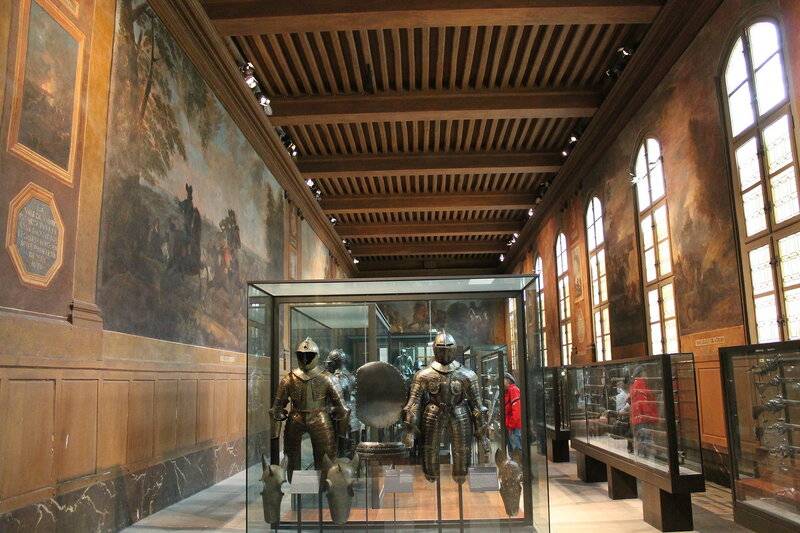
One of the knights' halls of the Army Museum in Paris. It’s impressive, it’s convenient to look at them, but because of the location of the windows, it’s almost impossible to take pictures, the shop windows glare so much
"The warrior who puts on the armor,
shouldn't brag like the one
who takes them off after the victory.
Third Book of Kings 20:11
Museum Artifacts. Previous materials about meetings weapons and armor of a number of world-famous museums aroused the keen interest of VO readers. But ... as always, questions arose: “Why didn’t you give that, but where is it? “In a word, you get used to good things very quickly, and then you want even better, and so on without end. In any case, the desire of the readership is the law for the author, and if so, then this topic will be continued.
By the way, we have already talked about the knightly armor of individual famous personalities, both from the Metropolitan Museum in New York and the Royal Arsenal in Leeds, as well as from some other museums, and in particular, the Dresden Armory. Some readers were interested in the armor of the King of France Francis I * from the Army Museum in Paris and ...
Now we will tell you about them.
Armor of King Francis I
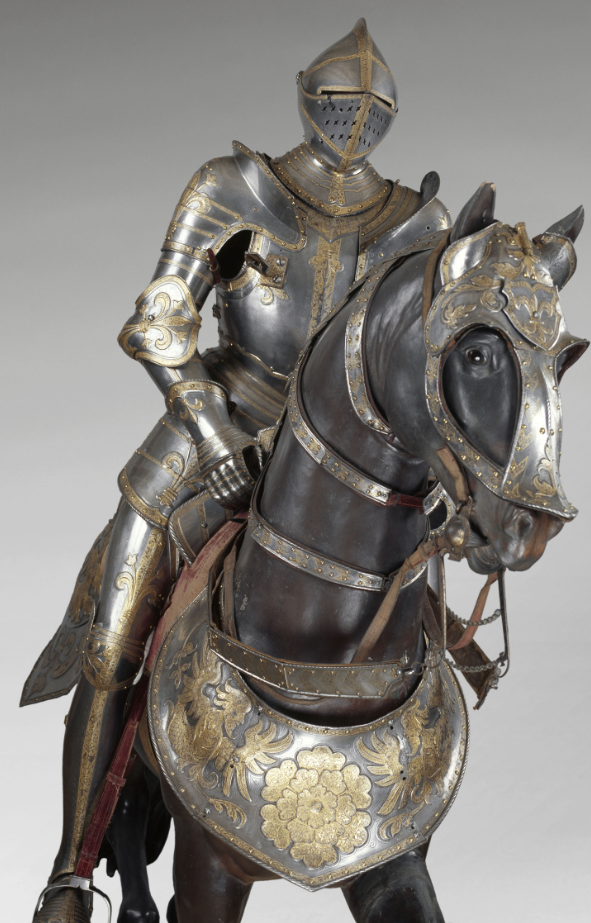
Here he is - Francis I in his armor from the Paris Army Museum
So what can be said about them?
Let's start with the fact that they were made in 1539-1540. by master Jörg Zausenhofer, a representative of a well-known dynasty of gunsmiths from Augsburg. The armor is exceptionally large in size: 2 mm high, 020 mm wide, and weighs 830 kg. They were planned as a gift to Francis I from the Holy Roman Emperor Charles V in honor of the next "eternal" peace concluded by them between him and Francis in 20,6 in Nice. The armor was ordered to Jörg Sausenhofer by the brother of Emperor Charles V, Archduke Ferdinand von Habsburg (future Emperor Ferdinand I) in 1538.
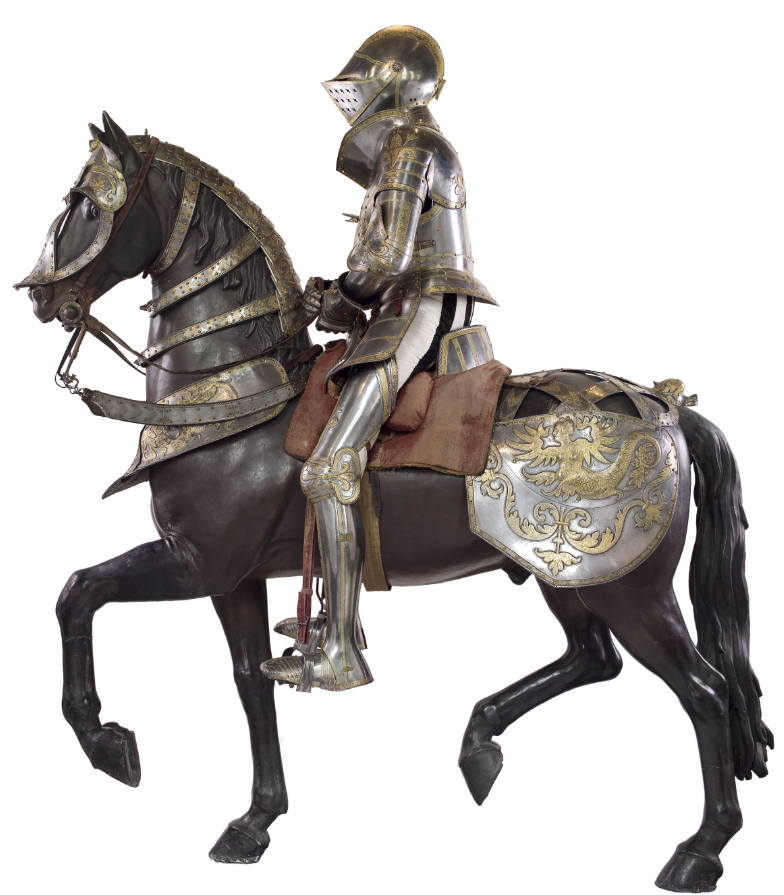
The same armor, side view
In 1539, Jorg traveled to Paris to measure the King of France. But it was not possible to make this armor quickly; it took almost two years to work on them. So, when they were ready by November 1540, relations between the empire and France deteriorated again, so the Habsburgs never sent their gift to Francis.
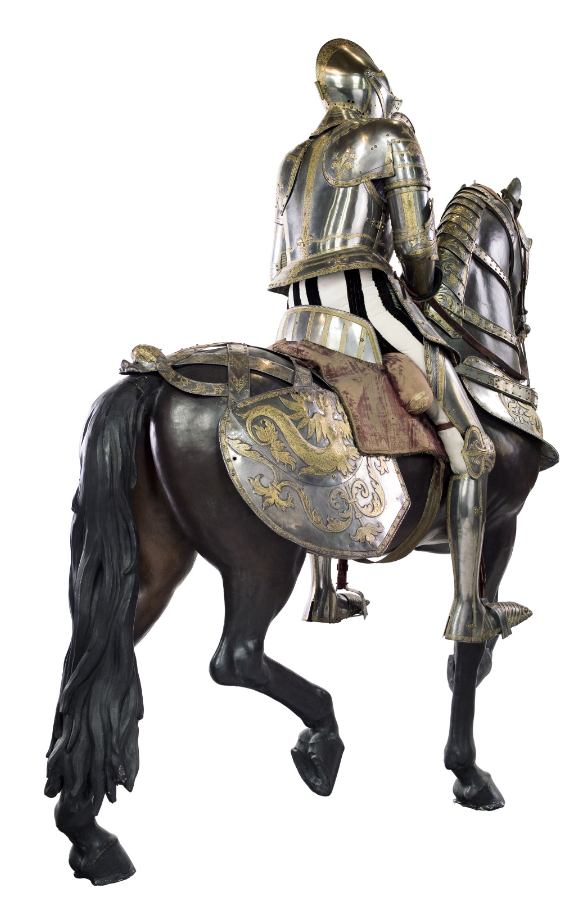
Rear view
As a result, the armor was created, but at first it never got to France. According to the fashion of those years, it was a complex set, which at the same time served as ceremonial armor, and combat, and tournament. It is clear that this armor was of the highest quality and with the richest decor.
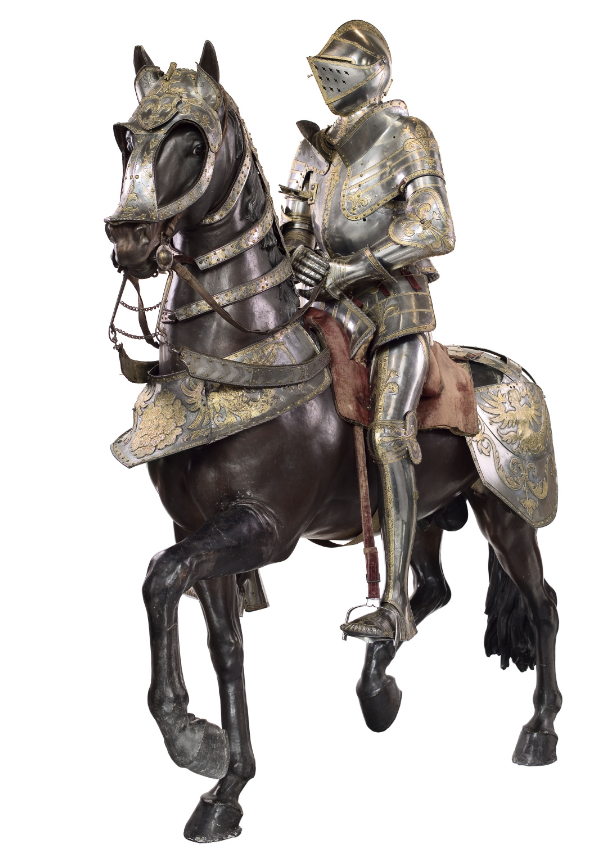
Front view
In the end, the armor came to the famous collector of armor and weapons, Duke Ferdinand of Tyrol, who kept them in his castle of Ambras in Innsbruck. There they were kept until February 1806, when the French took this set to Paris.
Thus, after 270 years, justice was restored, and the headset finally reached its destination.
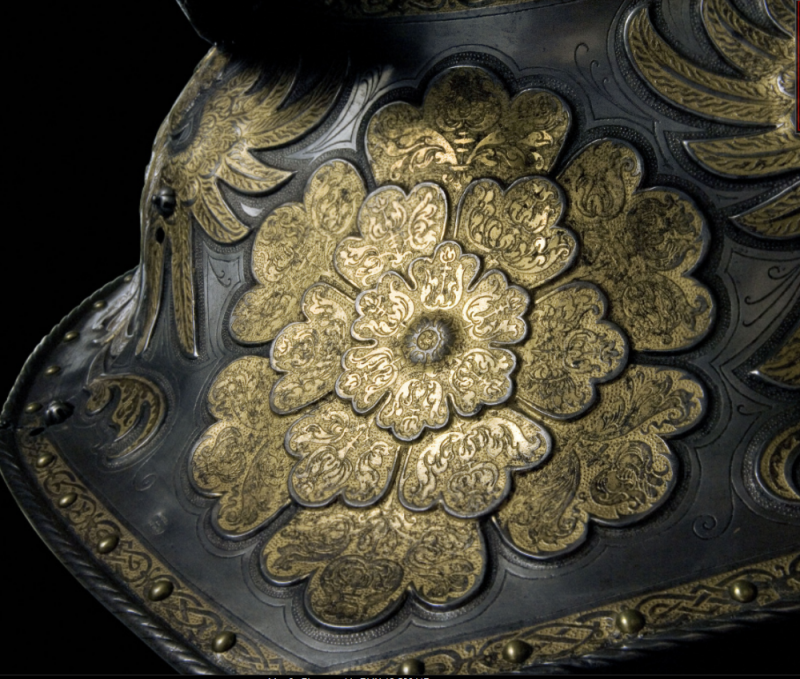
And this is a breastplate!
But the French, firstly, forgot to pick up additional elements of armor (in particular, the grandguard of the cuirass and the left shoulder pad, as well as removable elements of the helmet), and they remained in Innsbruck.
Secondly, along with the armor of Francis, they took away the armor of a war horse, which seemed to the French general who led this "operation", "suitable in style." But the horse armor turned out to be from a completely different armor, although the work of the same Jörg Zauzenhofer, who in 1547 made it for the future Emperor Ferdinand I.
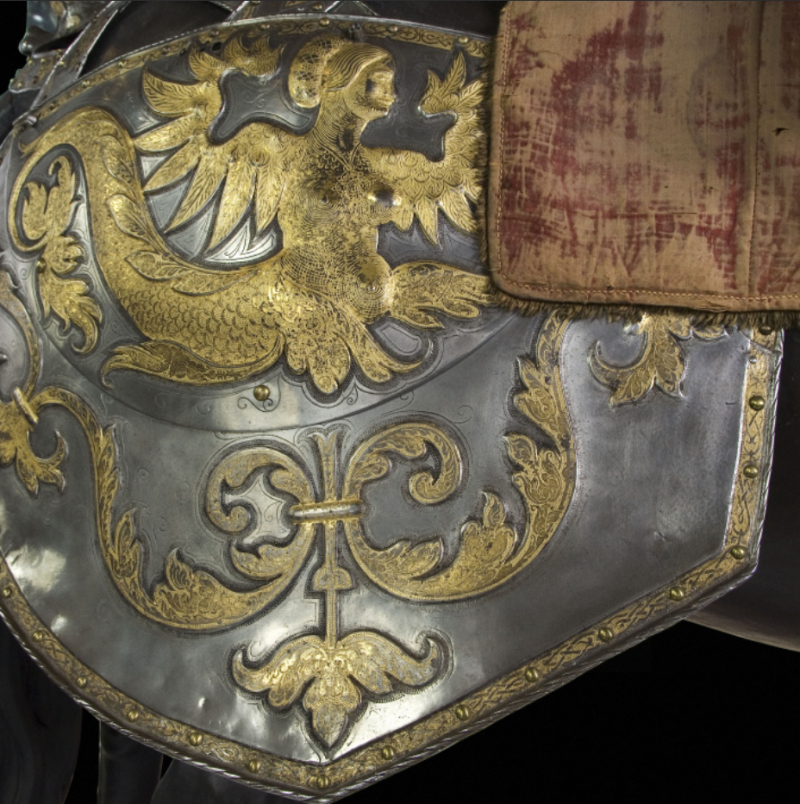
Nakrupnik
These are the adventures of the armor, just the real Indian cinema with substitute twins.
Well, in 1807, the armor of King Francis I, together with a set of horse armor for the horse of Ferdinand I, was exhibited as a “trophy” in the Louvre, after which it was transferred first to the Artillery Museum, and then to the Army Museum, where they are still on display.
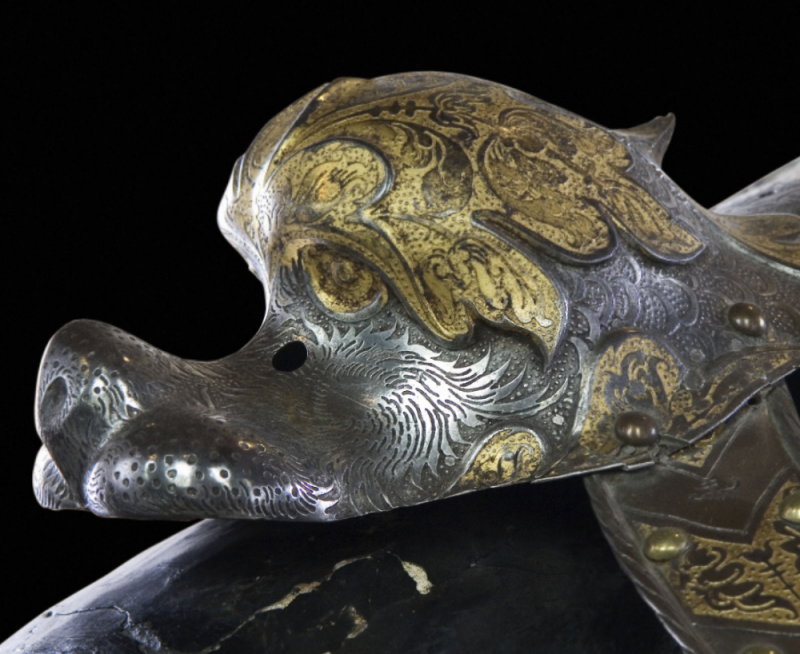
And this unusual detail is a tail. It was on the krupnik just above the very place where the horse's tail was sticking out!
By the way, when the tomb of Francis I was opened in 1979, an anthropological study of his remains showed that his height was 1,92–1,98 meters, that is, at that time he was a real giant!
Armor of King Henry VIII
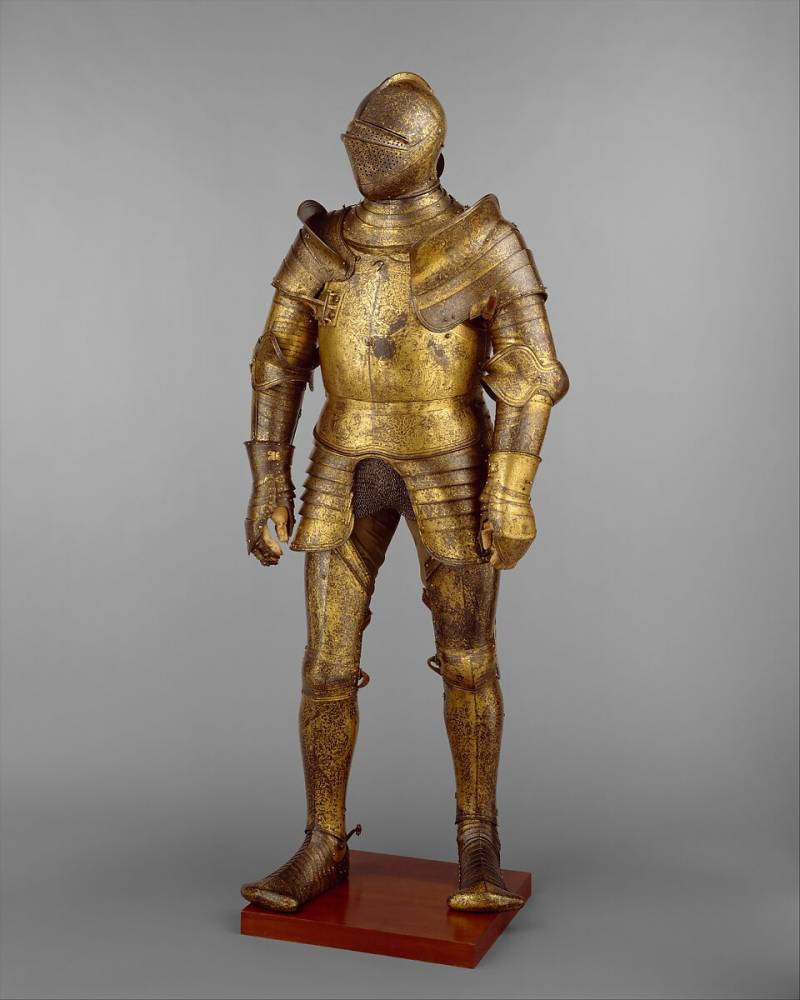
Armor of King Henry VIII from the Metropolitan Museum of Art in New York
Everything is known in comparison, so the next armor will also be the armor of the king, and the very well-known king - Henry VIII ** (1509-1547).
These armors are made in England in the famous Royal workshops in Greenwich. Sketches for jewelry are attributed to Hans Holbein the Younger (1497–1543). Made around 1527. It is also the earliest surviving Greenwich armor, having a number of additional details with which it could be adapted for use in combat and in various types of tournaments, that is, it was one of the first knightly sets.
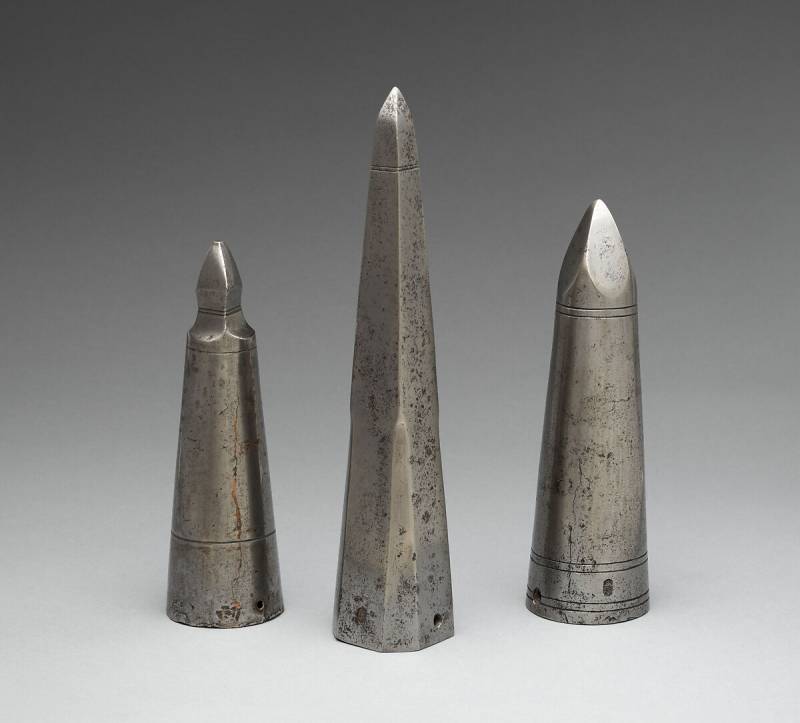
Spearheads for the tournament on sharp spears
In addition, the engraving and gilding make it one of the most ornate of all Greenwich armor. Replaceable elements of this armor have been preserved - a breastplate (granguard) reinforcing the cuirass with an emphasis for a spear for use in the field or in an equestrian tournament; reinforced left hand glove or manifer, also used in the tournament; and a right lockable glove for an equestrian tournament with swords.
A very unusual and innovative feature of this armor is the abdominal plate, which was worn tied to the chest under the cuirass to reduce the weight of the armor falling on the shoulders. The same plate is only on one more armor made in Greenwich for Henry VIII in 1540.
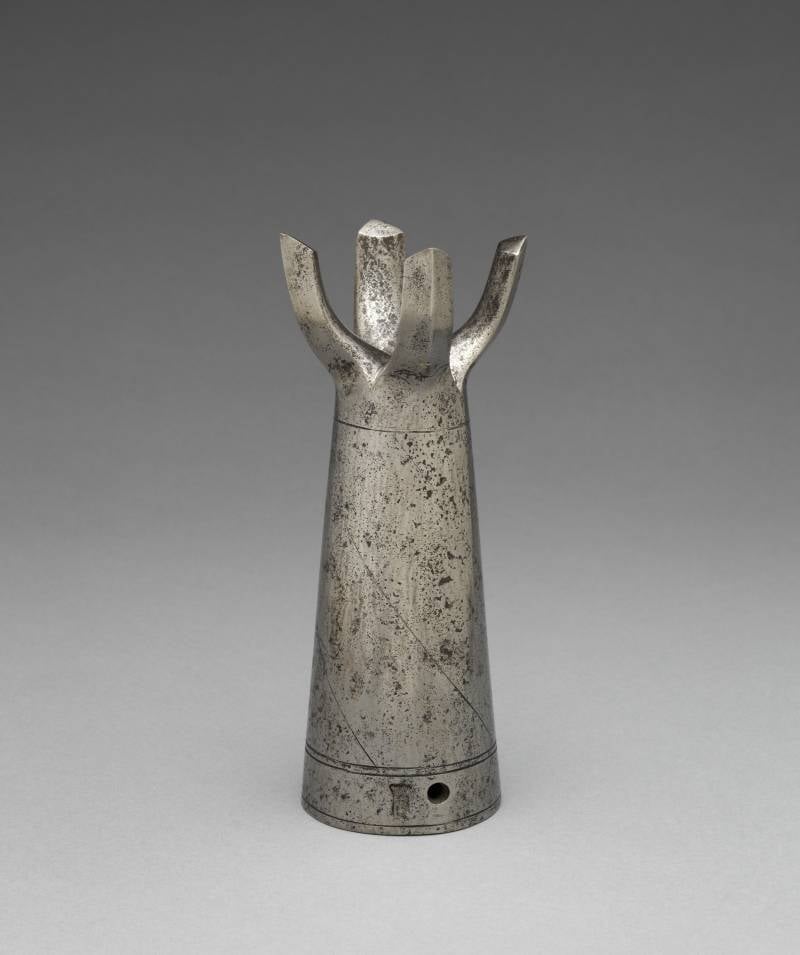
Tip for the "tournament of the world"
It is believed that this armor was made for Henry VIII, but presented by him to the French ambassador Francois de la Tour d'Auvergne, Viscount of Turenne, who headed the diplomatic mission in London in 1527.
After the death of the viscount in 1532, the armor passed to his friend Galio de Genouillac, the great master of artillery and the great ecuyère (master of riding) of France, from whose descendants he came to the Metropolitan Museum of Art.
Dimensions: total height - 185,4 cm; weight: 28,45 kg. Donation by William H. Riggs and the Rogers Foundation 1919
Armor of Holy Roman Emperor Ferdinand I
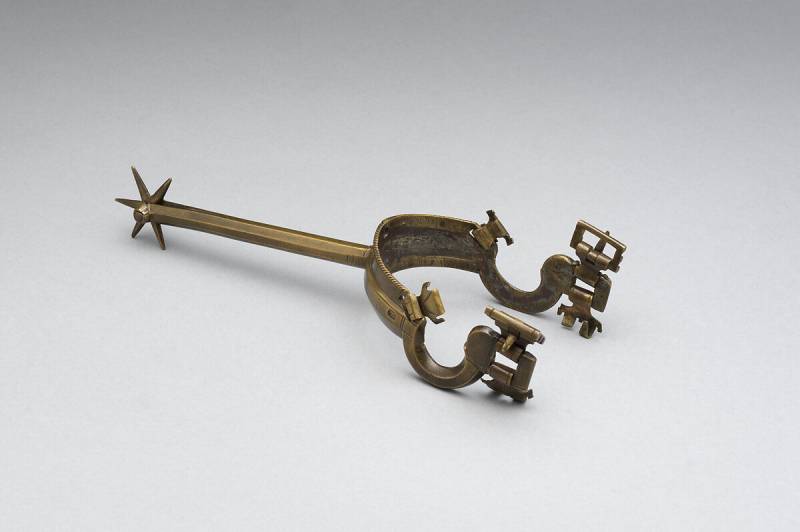
Knight's spur of the time of Henry VIII
And finally, the last armor, and also from the Metropolitan Museum of Art.
Full plate armor designed for the Holy Roman Emperor Ferdinand I (1503–1564) in 1549. Armor height 1 mm; weight 702 kg. That is, unlike Francis, this emperor looked like a dwarf, and together, or rather, side by side, they looked like a clown couple Pat and Patachon.
This armor was made by the famous Nuremberg armorer Kunz Lochner (1510-1567). Lochner created several sets of plate armor for Emperor Ferdinand and his son Archduke Maximilian (1527–1576) in 1546–1550. and these armors are some of the best.
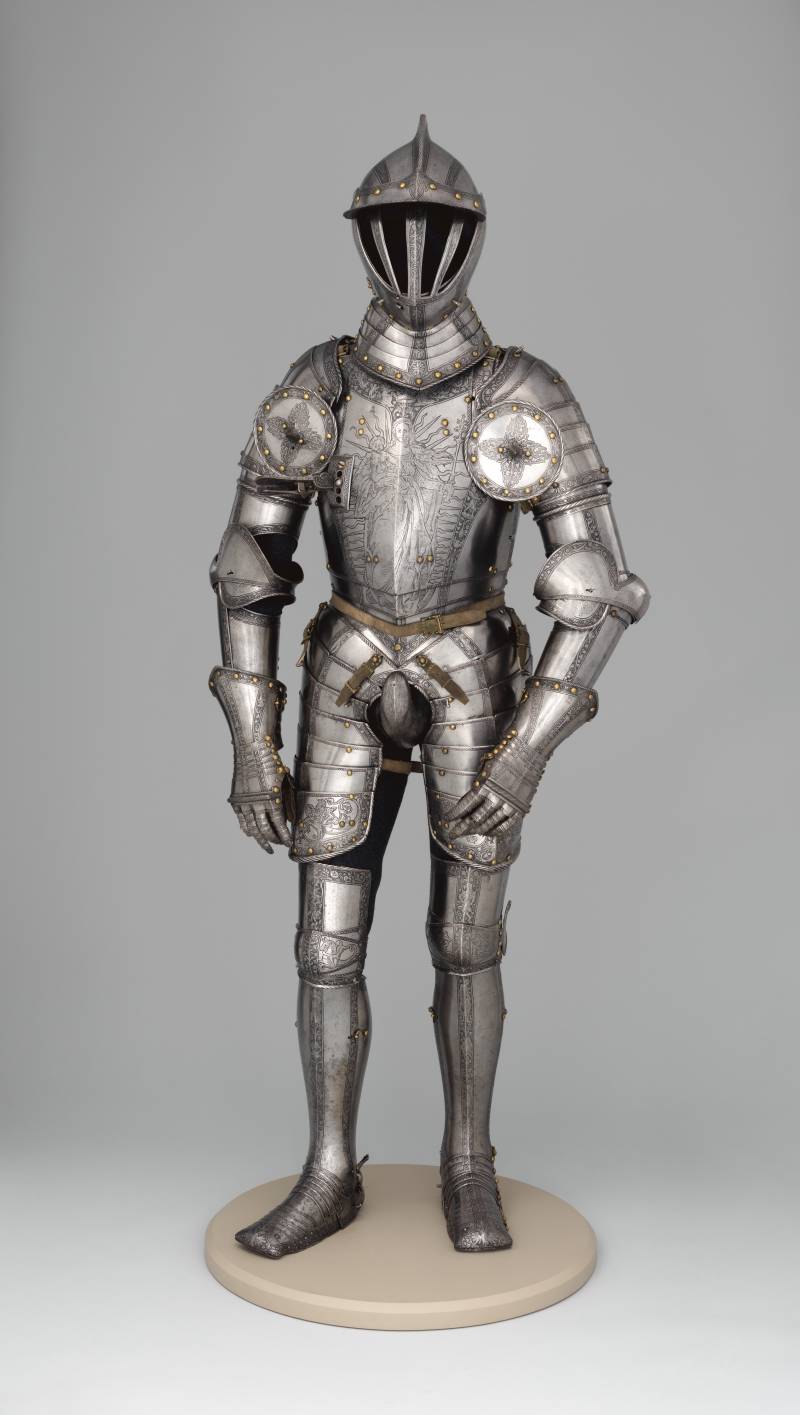
Armor of Emperor Ferdinand I. Front view
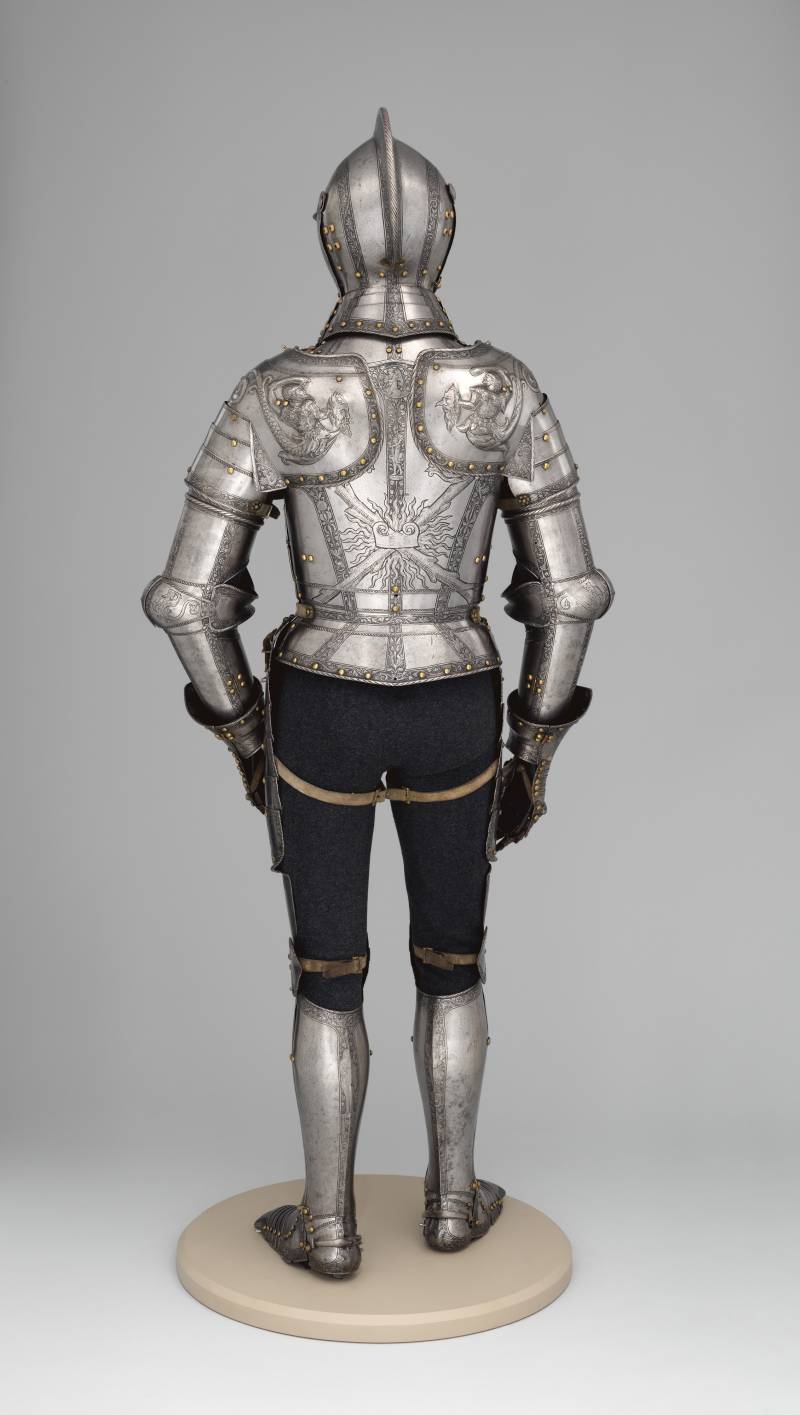
The same armor - rear view
The armor consists of a bourguignot-type helmet, gorget, cuirass (breastplate and backplate), shoulder pads, armpit protection disks (rondels), "pipes" for hands complete with elbow pads and combat gloves, codpiece, tassets (gaiters), knee pads and leggings with sabatons.
The helmet originally belonged to a different set.
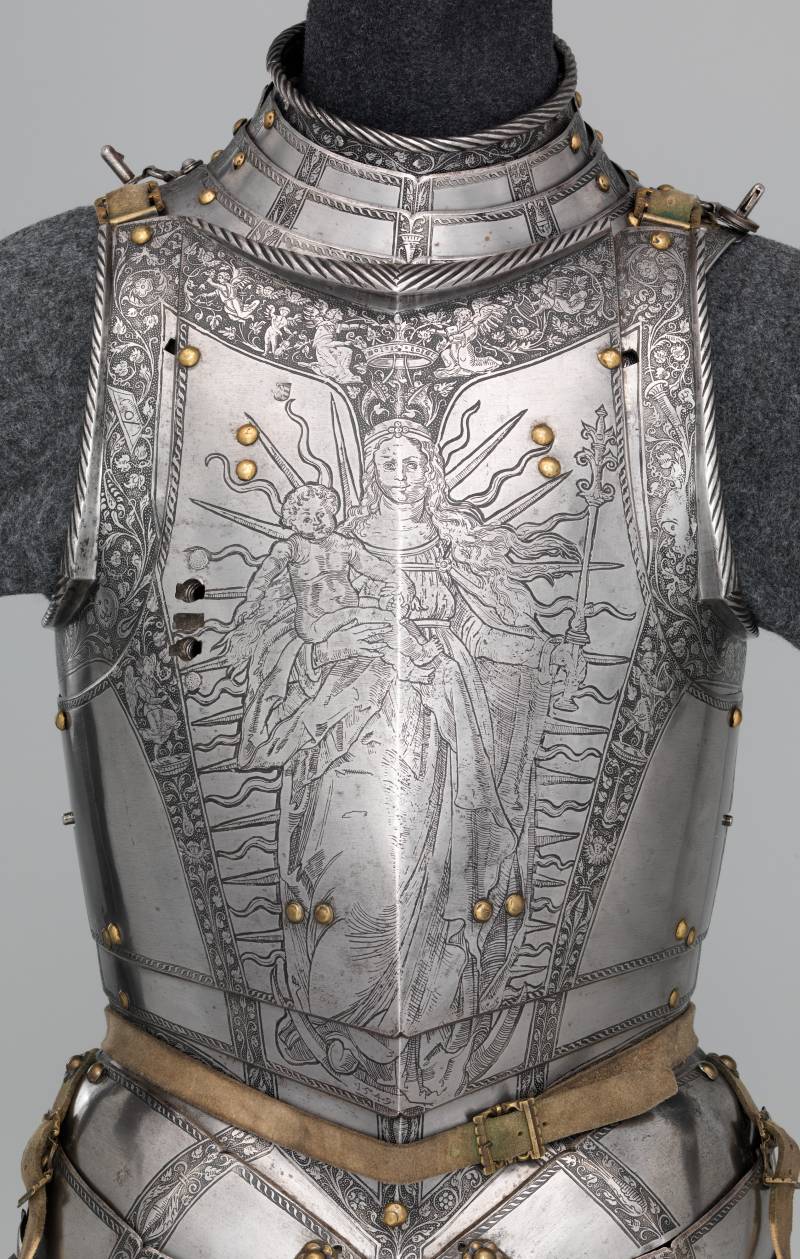
Cuirass depicting the Mother of God with the baby Jesus in her arms
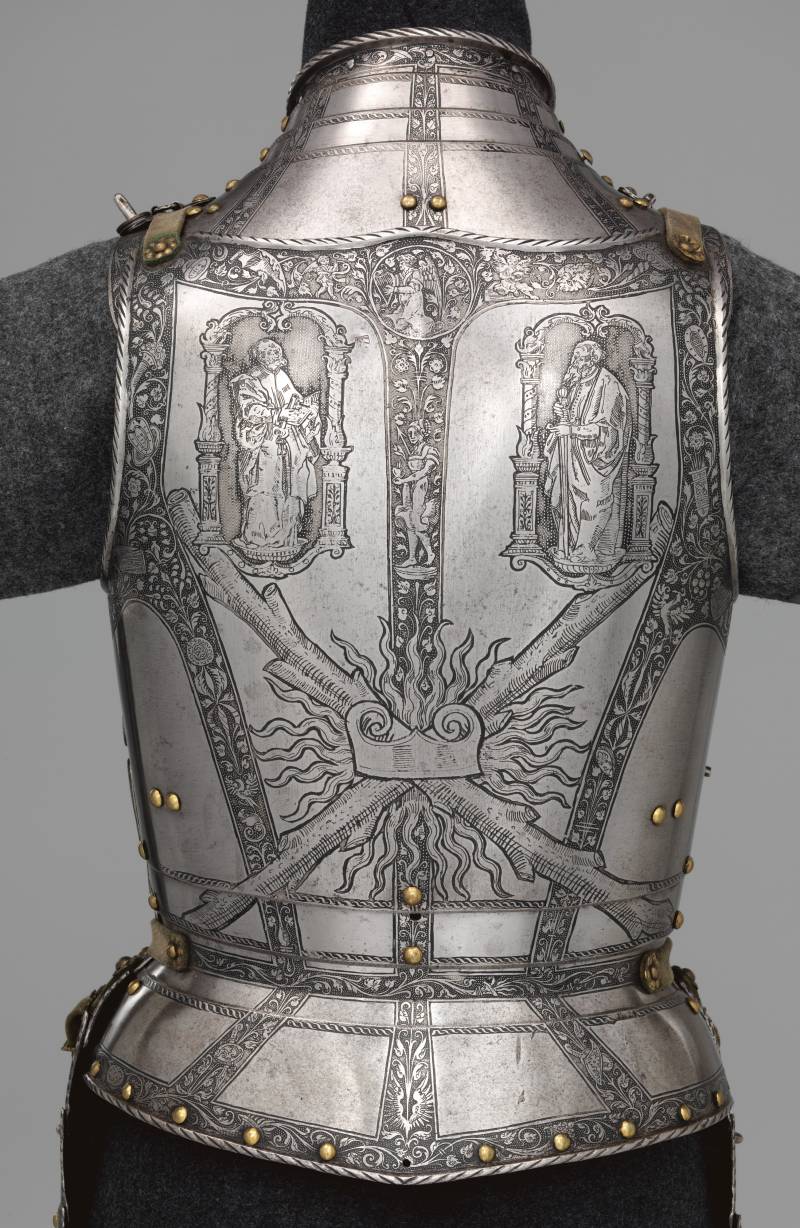
Cuirass - rear view
The entire armor is richly decorated with engravings containing religious motifs. On the cuirass in front in full chest - the image of the Mother of God with Jesus the baby in her arms, framed by tongues of flame, floral patterns and images of angels. On the back are engraved images of crossed branches and flames, which is a reference to the Order of the Golden Fleece. And in its upper part, St. Peter (with keys) and the Apostle Paul (with a sword) are depicted framed by floral patterns, again, with angels.
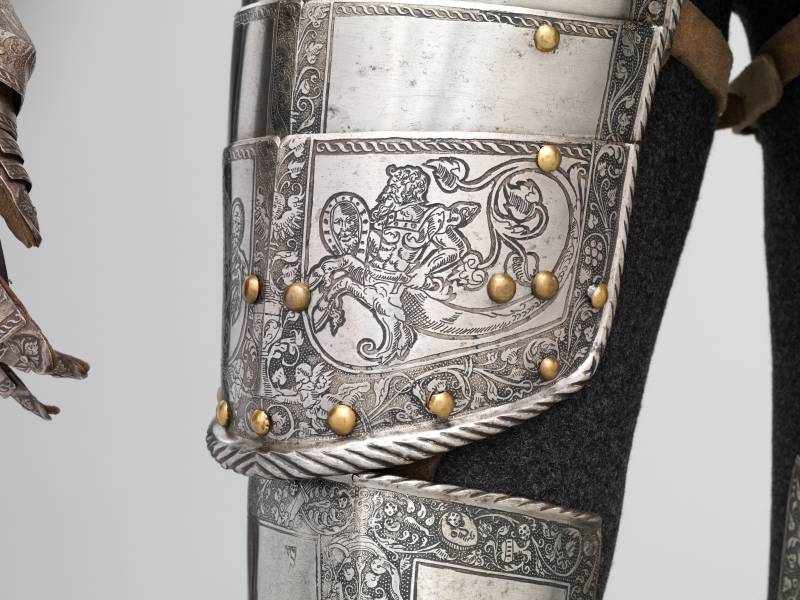
Ichthyocentaur. That's because the masters of that time had a truly unbridled fantasy!
All other parts of the armor are also engraved in a vegetable style. On the back of the shoulder pads, images of two ichthyocentaurs are embossed and supplemented with engraving. On the toes of the sabatons, imperial double-headed eagles under a crown are depicted. On one of the slats of the armored skirt, the date of manufacture is engraved - "1549".
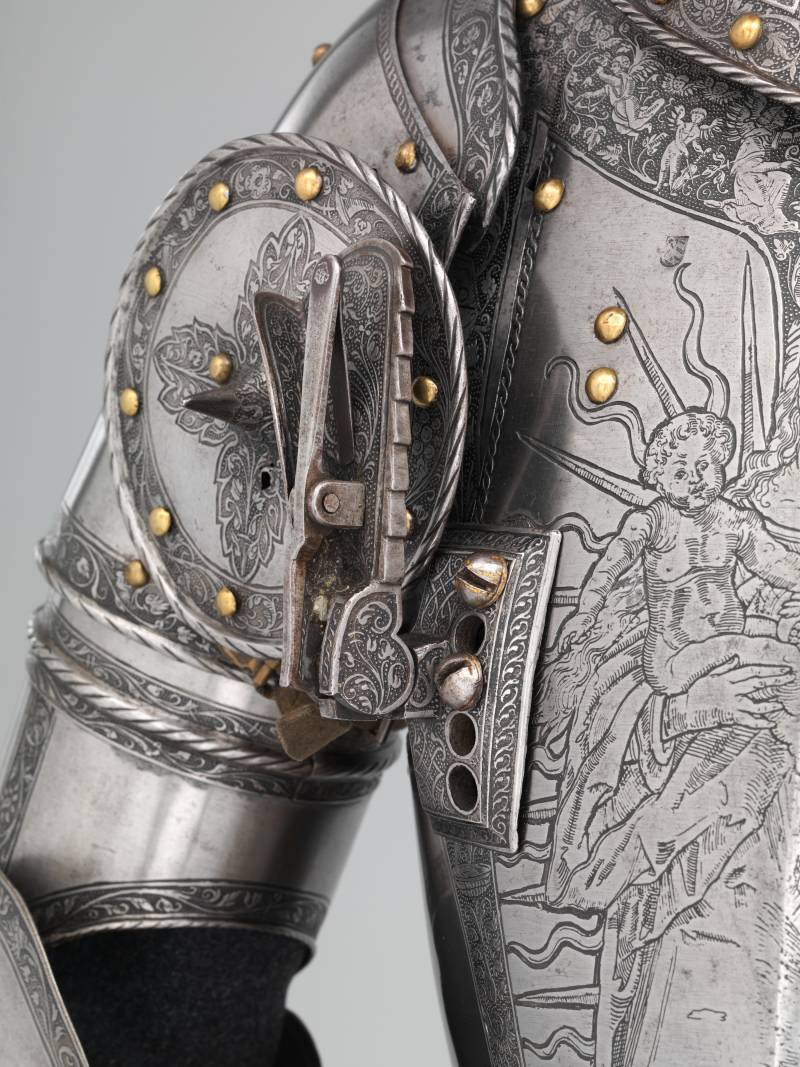
Removable spear hook of a very complex design ...
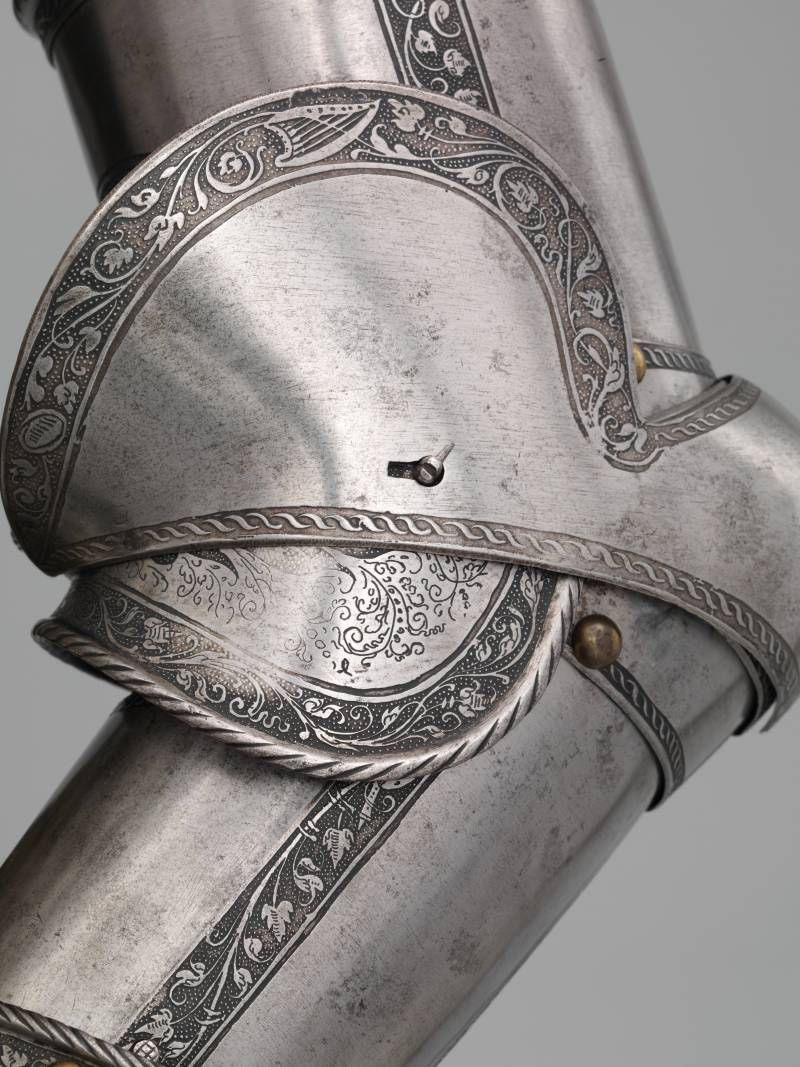
Elbow with a harp on the border
The belonging of this armor to Ferdinand I (1503-1564) is indicated, first of all, by the heraldic emblems on the socks: the imperial double-headed eagle topped with a royal crown, which indicates the status of Ferdinand. The butt plate is decorated with insignia of the Order of the Golden Fleece, an elite knightly society, of which Ferdinand was a member.
The armor was received as a gift from George D. Pratt in 1933.
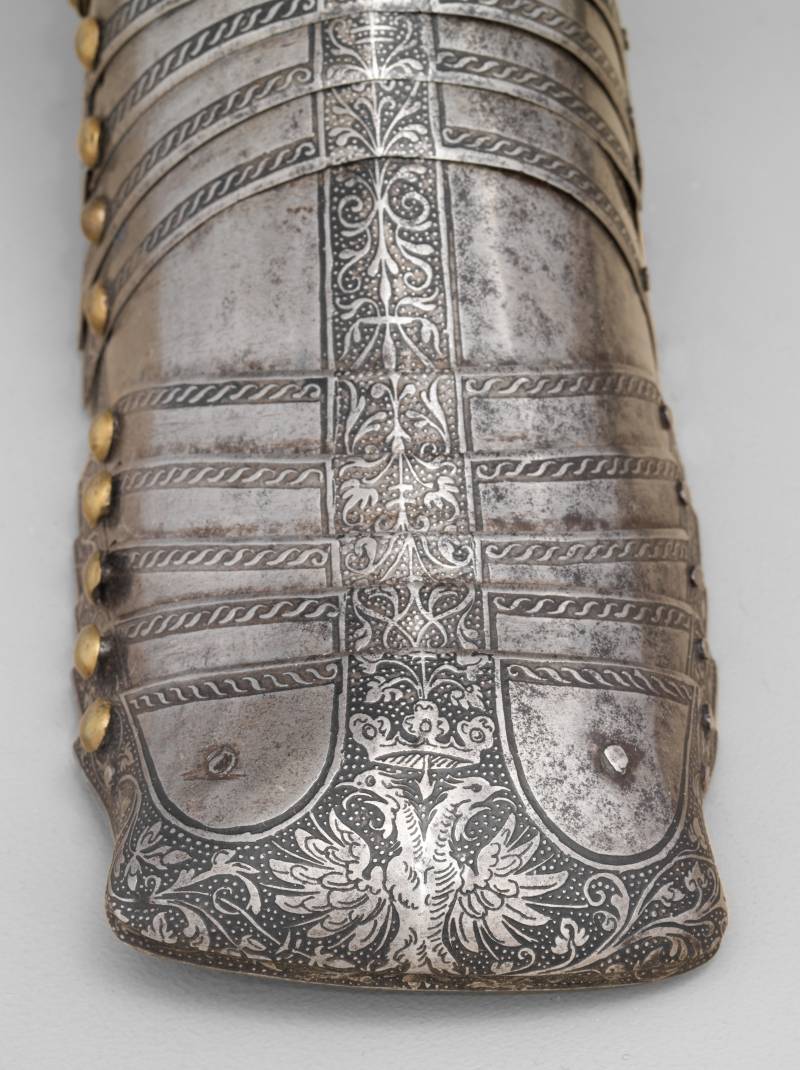
Sabaton toe with coat of arms
*Francis I - King of France from January 1, 1515, son of Count Charles of Angouleme, cousin of King Louis XII and Louise of Savoy. Founder of the Angouleme branch of the Valois dynasty. His reign was marked by long wars with Charles V of Habsburg and the flourishing of the French Renaissance.
**Henry VIII - King of England from 22 April 1509, best known for his six marriages and conflict with Pope Clement VII, which led Henry to start the English Reformation, which separated the Anglican Church from papal authority.
***Ferdinand I (1503-1564) - Emperor of the Holy Roman Empire, Archduke of Austria, younger brother of Charles V. Born in Alcala de Henares (Spain) on March 10, 1503. In 1521, Charles V appointed Ferdinand as his viceroy in Germany. In 1526, after the death of King Lajos II of Bohemia and Hungary in a battle with the Turks at Mohacs, Ferdinand, being married to his sister, was elected king of the Czech Republic and Hungary, and from 1556 (formally from 1558) became emperor.
Information